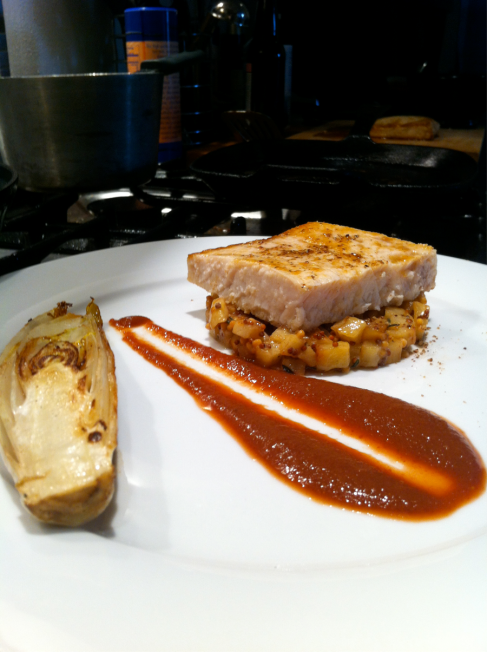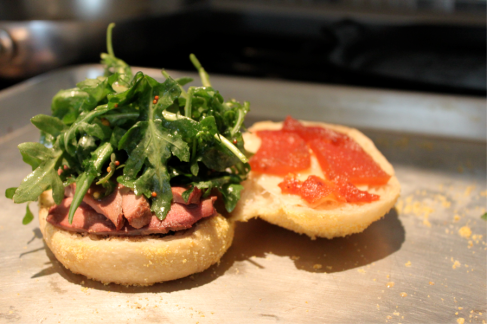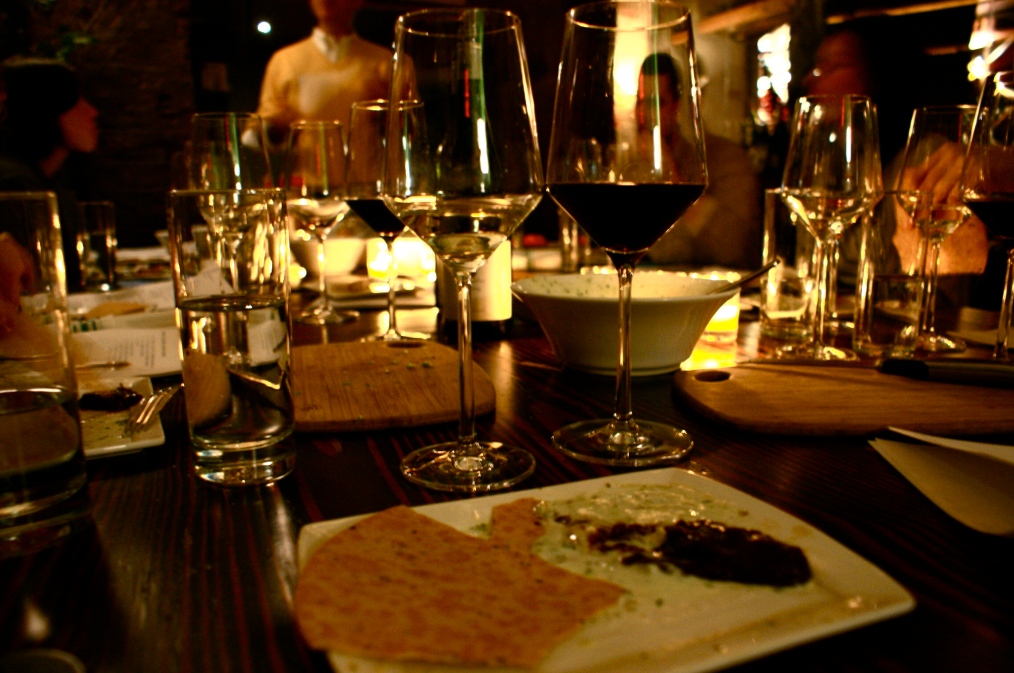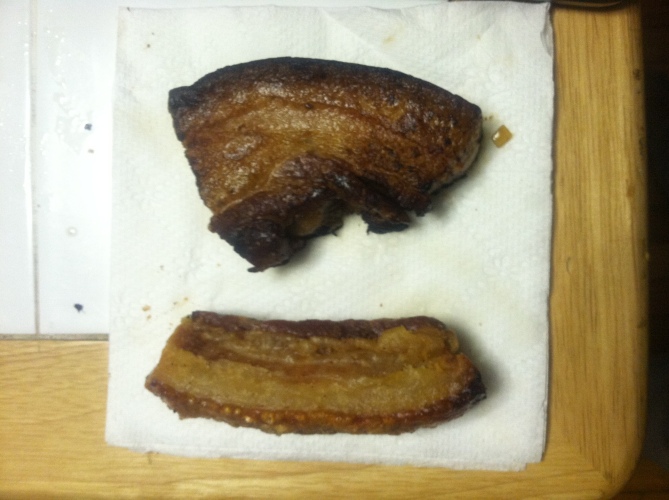As the foodie capital of the world, New York City is also arguably one of the wine capitals—at least in terms of consumption. The city is riddled with top-notch wine cellars and swanky new wine bars, and the wine lists at its thousands of restaurants are some of the most extensive and mouthwatering in the world. Unfortunately, one of the oldest kinds of wine in the world—mead—is rarely found on those lists. This may change in the next few years, as foodies and wine drinkers set their sights on locally-crafted and utterly unique honey-based brews. All it may take is a little exposure.
A few Sundays back, Greenpoint locavore restaurant Eat shed some of that exposure by hosting a very special wine tasting event with New York winemaker Rafael Lyon, founder of Enlightenment Wines. The winery, which took its name from 18th century Age of Enlightenment, which challenged received wisdom and blind obeisance to dogma, today pushes against the “received wisdom” of modern winemaking. Rafael focuses on producing natural, healthful, and delicious “wines, meads, and potions” using traditional, even ancient methods of production. He uses local ingredients—wild flowers, herbal infusions, honey, and apples—and city-sourced tea, and refrains from adding sulfites, chemical preservatives and colorings, and other non-natural ingredients to his wines. He relies only on mechanical labor, as his operation lacks the machines of most other, more traditional wineries. He also employs the “ancestral method” to make his sparkling wine, which means he allows the sediment from yeast fermentation (the “leeds”) to collect at the bottom of his bottles, rather than removing them or flushing them out as other winemakers do through the conventional “Champagne” method of making sparkling wine. This sediment contributes to the flavor of the beverage and is also full of vitamin B12 (another welcome way that wine is good for you). This method tends to result in two very different pours from the same bottle, the first of which is clean, clear, and refreshing, and the second of which is darker and somewhat thicker due to the yeasty sediment.

During the tasting, Rafael pointed out an important difference between honey wines and grape wines. Honey wines, defined as “meads” by the U.S. government, rely on the addition of extra ingredients in order to ferment as grape wines do. Honey is not acidic enough to ferment on its own, and it lacks the tannins found in grape skins and the trace nutrients that help preserve wine after fermentation. Rafael remedies this by adding black tea for tannins and herbs or fruit juices for trace nutrients. Due to this process of addition and adaptation, mead makers approach wine with an altogether different mentality than grape winemakers. Whereas makers of grape wines are focused on “terroir” and are constantly seeking to express the inherent, unique qualities of their grapes, mead makers have no similar responsibility to their honey. Rafael is not interested in the terroir of his honey; they honey all tastes the same once it’s in the bottle, he says, and for that matter it doesn’t always play a strong role in the final wine’s flavor. Rather, he is trying to produce unique, tasty wines that have integrity and express the interplay of the various honeys, fruits, and herbs contained within each bottle.
And so far, he’s been a success. The first wine of the tasting was an apple and honey based mead, with tea added for tannins. Named “Last Gift of My Daemon Lover,” it smelled sweet and at first blush tasted like crisp apples, but it had a grassy, earthy aftertaste. It was one of only 1,000 bottles—another unique feature of this winery, whose production is so small that each bottle is numbered by hand. The second wine was a lovely, raspberry-colored, elderberry-infused apple-honey mead called “Rubacuori.” It was slightly sweet but dry—just the style Enlightenment Wines is currently aiming for, likely in an attempt to shift away from the syrupy, viscous berry and honey wines that many are familiar with. The third wine, “Elsa,” was a very dry, pure honey mead with hops added as a natural preservative. This gave it a beer-like taste, which contrasted well with its strong smell of honey and its sweet aftertaste. The fourth, “Jewels Into Flowers,” was a chrysanthemum and chamomile wine that smelled like apple juice and tasted like herbal tea, with a mild, warming finish. The fifth was another tea-based wine, this time infused with lemon verbana and fermented with wild yeast (as opposed to store-bought, packaged yeast). It tasted smoky and citric, like a mild kombucha, with an abrupt acidic finish that caught the taster’s attention. The sixth and final wine was a special dandelion wine called “Memento Mori.” As Rafael explained, dandelion wine was traditionally made by English farmers from May flowers in an effort to preserve vitamin C. It was consumed in the winter when vitamin C was scarce, and in this way was used to fend off scurvy. Now an after-dinner drink, it was originally used as a tonic and tends to have a grassy, herbal taste. Memento Mori, beautifully presented in a slim, green bottle, contained maple syrup instead of honey and was clear, earthy, and warming—a wonderful way to eat your dandelions. All of the wines at the tasting were simple, delicious, and delightfully unique, not to mention beautiful in elegant and colorful bottles with art-inspired labels.
For the most part, Rafael’s wines can only be tasted by signing up for a CSA share (“community-supported alcohol”), though he does occasionally sell to local restaurants or wine shops like Greenpoint’s Dandelion Wine. If you do get your hands on one, don’t save it for a rainy day. According to Rafael, the flavor profile of meads changes quite a bit in its first six months of life, and, like many white wines, meads and fruit wines are best consumed within two years of bottling. In the mean time, Eat, a hyper-local restaurant that uses butternut squash oil in place of its far-flung olive cousin, is also worth a visit. It offers simple, wholesome meals that are a conveniently perfect match for Enlightenment Wines.
– Chelsea Newson





